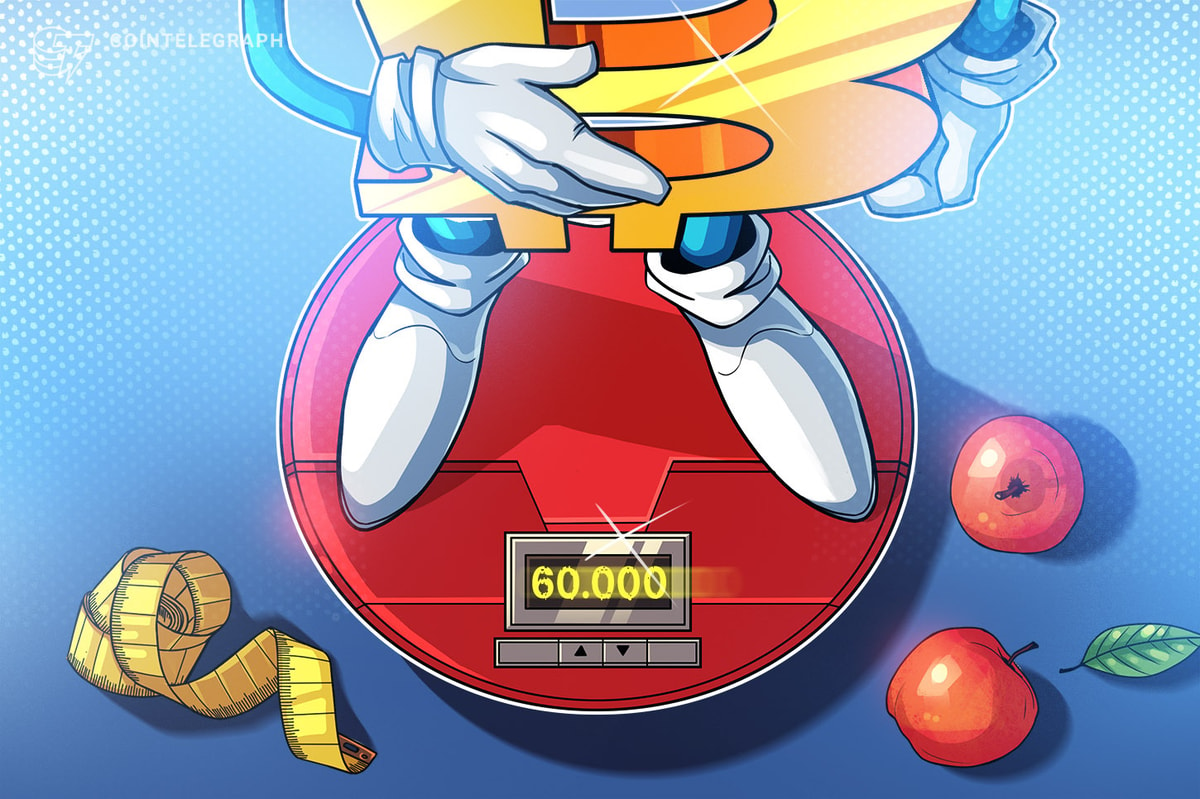Questions have arisen around Bitcoin’s fair value after a popular economist predicted that the world’s first cryptocurrency may never fall below $60,000.
The Bitcoin (BTC) price could settle above the $60,000 psychological mark, according to economist and rader Alex Krüger, who wrote in a Nov. 5 X post:
“50% probability of Bitcoin never trading below 60K again.”
Bitcoin’s value. Source: Alex Krüger
The economist’s prediction came on US election day, which has placed additional attention on Bitcoin and cryptocurrencies. On Monday, Nov. 4, Bitcoin bottomed out above $66,815 before recovering above $68,750 as of 1:37 pm UTC on Nov. 5.
Bitcoin/USD, 1-week chart. Source: Cointelegraph
Some analysts expect the post-election volatility to lead to a Bitcoin breakout to new all-time highs. Notably, Bitfinex analysts predict a Bitcoin rally to $80,000 before the end of 2024, driven by the options market structure and the prospect of a Republican presidential victory.
Related: Trump win confirmed? Jim Cramer says markets predict Harris win
Bitcoin’s “floor price” crossed $40k: Adam Back
Some metrics suggest that Bitcoin’s floor price may be above $40,000, including the 200-week moving average — a popular technical indicator used to determine long-term market trends, by removing the daily volatility.
This key indicator crossed the $40,000 mark on Oct. 18, according to Adam Back, the co-founder and CEO of Blockstream and the inventor of Hashcash.
Back wrote in an Oct. 20 X post:
“The Bitcoin 200 week moving average, effectively the bitcoin floor “up only” price crossed $40k. You can view it as roughly the bitcoin floor price without the volatility, at least historically.”
Bitcoin 200-week moving average. Source: Adam Back
Related: Stablecoins essential for US dollar’s future, says Paxos CEO
Others argue that Bitcoin’s cumulative value coin days destroyed (CVDD) is a better metric to determine Bitcoin’s floor price, or “absolute market bottom.”
Bitcoin/USD, 1-week chart, CVDD. Source: TradingView
At the time of publication, Bitcoin’s CVDD stands at $26,520, TradingView data shows.
Harris vs. Trump 2024: What’s at Stake for the Crypto Market? Source: YouTube
Magazine: Microsoft set to vote on Bitcoin, Peter Todd hiding, and more: Hodler’s Digest, Oct. 20–26

